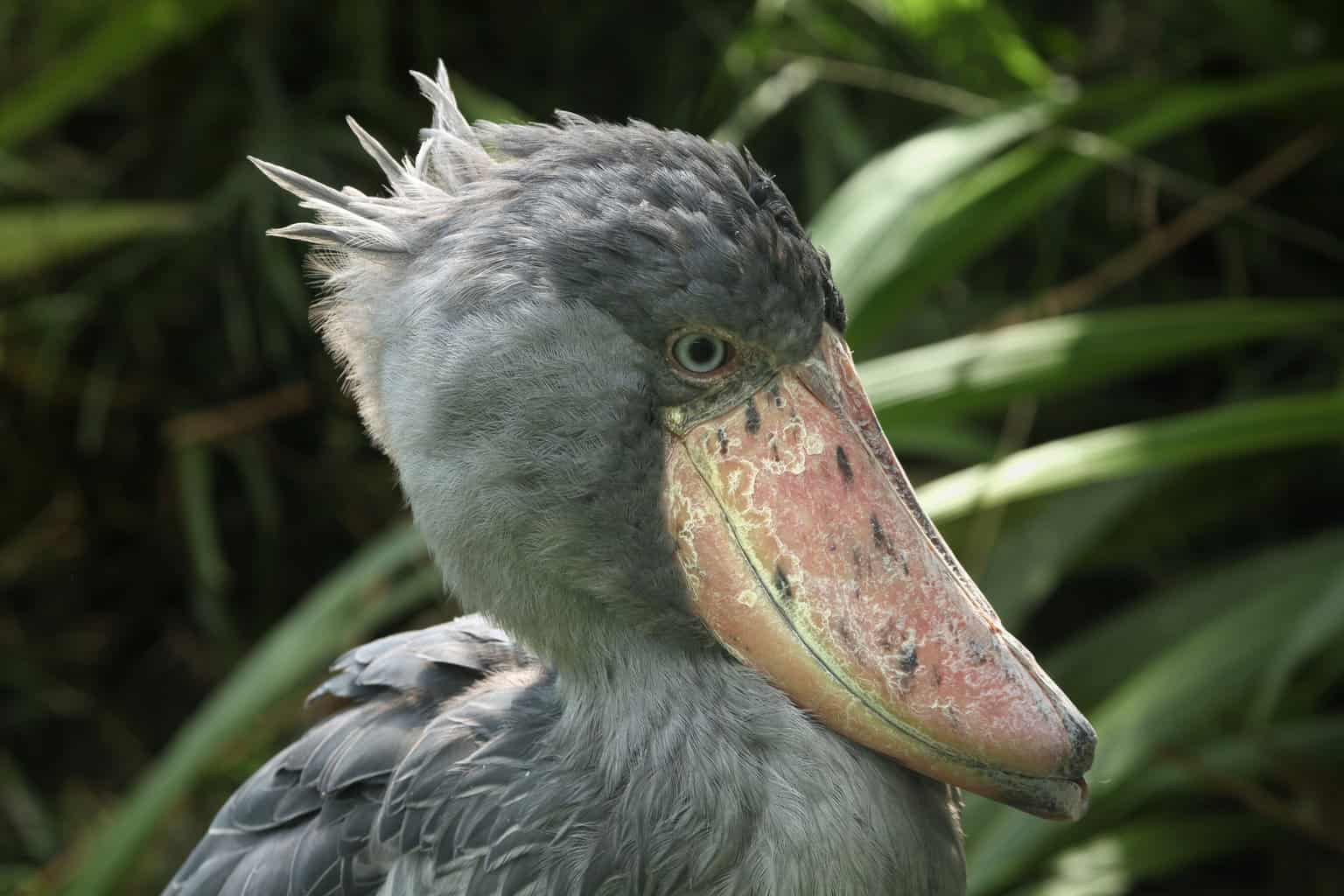The first time I saw a picture of a Shoebill stork, I wasn’t even sure if it was real. Was this a real bird, or was it a Photoshopped hoax?!
Imagine my delight when I discovered that the Shoebill stork is a real and fascinating bird.
What Does the Shoebill Stork Look Like?
There is no confusing the Shoebill stork with any other birds.
This beast of a bird can grow to about 5 feet tall, although they are usually between 43 and 55 inches tall. Measured from tail to beak, they are up to 55 inches long, and they have a wingspan between 7’7” and 8’6”. They weigh up to 15 pounds.
They are likely related to herons and pelicans. They are grey in adulthood but brown as juveniles.
The most striking feature of the Shoebill stork is its giant bill. It is actually the third-longest bill of all birds that are currently living on the globe, following only the pelican and large storks. However, it has a larger circumference than any other type of bird that is currently alive.
Shoebill Stork bills are pale yellow and gray. The top of the bill ends with a sharp point, like a nail. These birds also have long legs and huge feet. It uses these big feet to stand confidently on aquatic plants while searching for food.
They have intimidating expressions on their faces, too! Sometimes it looks like a Shoebill stork is staring right at you, just daring you to say something!
Do Shoebills Fly?

They do! Shoebills can fly quite well, and they are especially good at soaring through the sky. They don’t usually migrate unless there is a shortage of food in their habitat.
Where Do Shoebill Storks Live and Nest?
Shoebill storks live in tropical East Africa. Specifically, they inhabit swampy lands from South Sudan to Zambia.
They live right on the water, building their nests atop floating aquatic vegetation. They are highly territorial during the breeding season and only lay between one and three eggs every year. It takes the chicks 125 days to reach full independence
How Long Do Shoebill Storks Live?
Shoebill storks have a very long lifespan!
In both captivity and the wild, they tend to live between 35 and 36 years.
One of the reasons for its long lifespan is that it has no natural predators. Even many humans avoid hunting and killing Shoebill Storks as tradition states that it’s bad luck to kill one.
How Strong Are Shoebill Storks?
That bill can do some serious damage. Shoebill Storks can use their beak to bite the heads of giant lungfish, which are up to six feet long!
Their bite power is measured at 3,700 PSI (pound per square inch). That’s the same as a saltwater crocodile, and more than 3x as strong as a lion, hyena, or tiger’s 1,000 PSI bite.
What Else Are Shoebill Storks Called?
Shoebills have a few other nicknames, including the whalebill and the whale-headed stork. They are sometimes described as dinosaur-like.
What Do They Sound Like?
Check out the somewhat eerie sounds of the Shoebill stork:
They make a hollow clapping sound by quickly smacking their jaws closed, over and over. It has been described as sounding like a machine gun or tribal drums. This is called “bill clattering.”
They also whine and “moo,” kind of like a cow.
Most of the time, however, Shoebill storks are relatively quiet birds.
Hatchlings sound like hiccupping humans when they call for food from their adults.
What Do Shoebill Storks Eat?
Shoebill storks are carnivores that consume large amounts of fish, amphibians, and reptiles.
They eat catfish, lungfish, eels, monitor lizards, snakes, and even juvenile crocodiles!
They find food by wading slowly in the water until they see their prey. Then, falling forward, they grab the prey and a bunch of vegetation. They almost always bite the head off of their prey before eating it.
Are Shoebill Storks Endangered?
There are estimated to be between 11,000 and 15,000 Shoebill storks alive today. It’s hard to get a good count because they live far away from humans, but they are considered to be “near threatened.”
Although they are found in zoos, there are very few stories of successful reproduction in captivity.
When young are hatched in captivity, they imprint on human zoo workers instead of their adult birds, and they are not inclined to mate or reproduce when they reach adulthood themselves.

